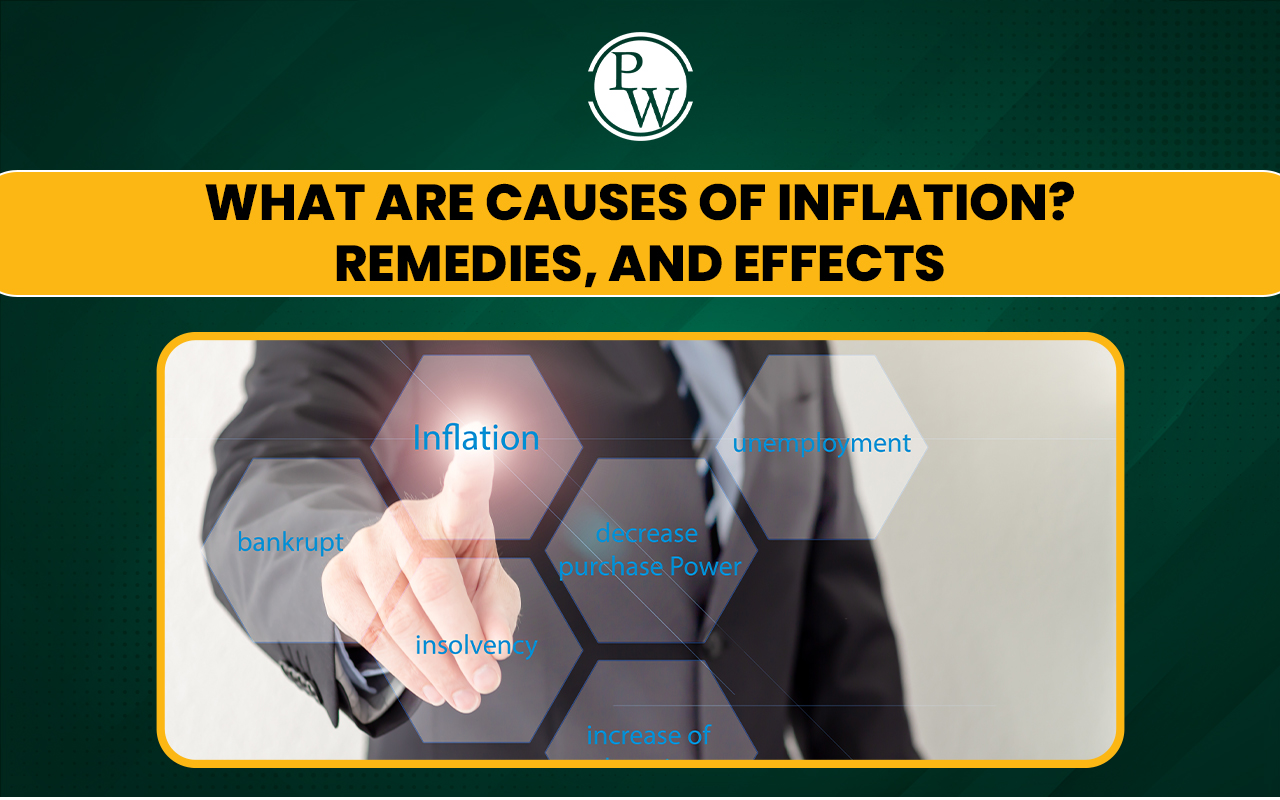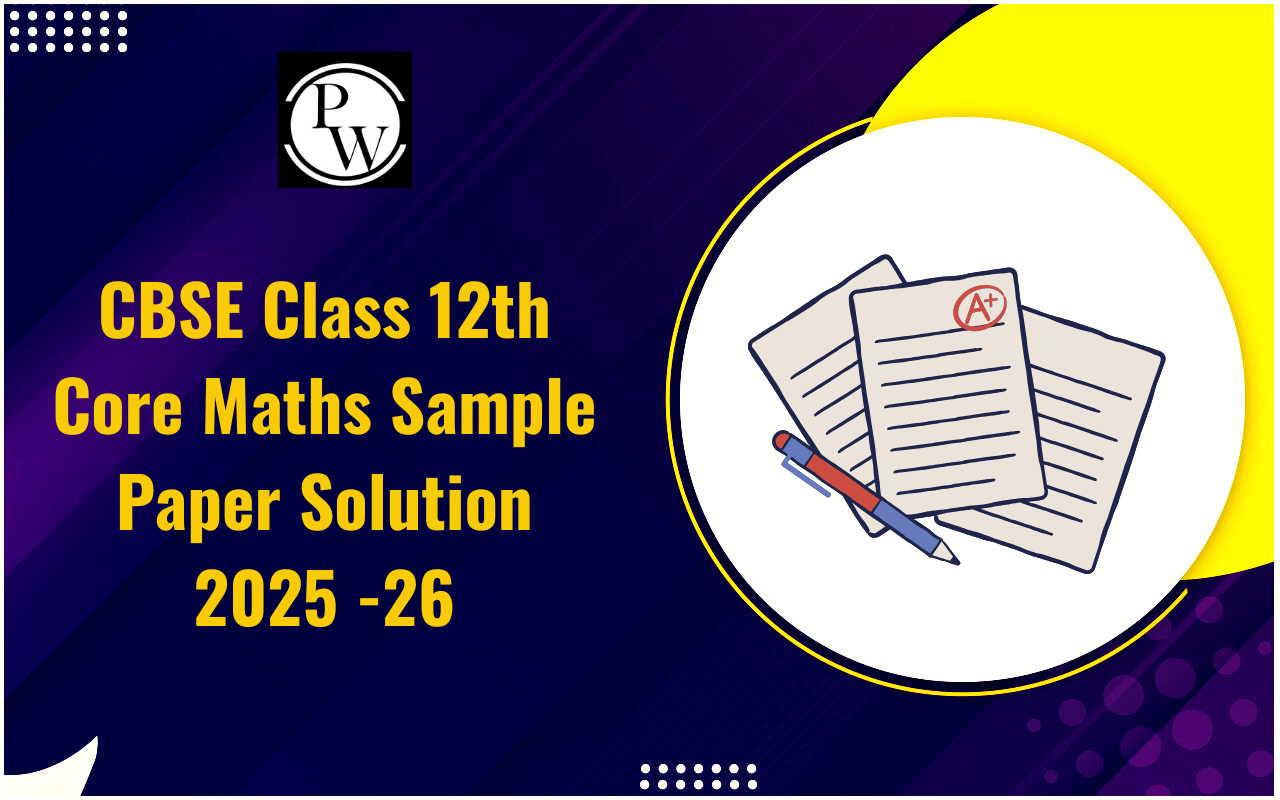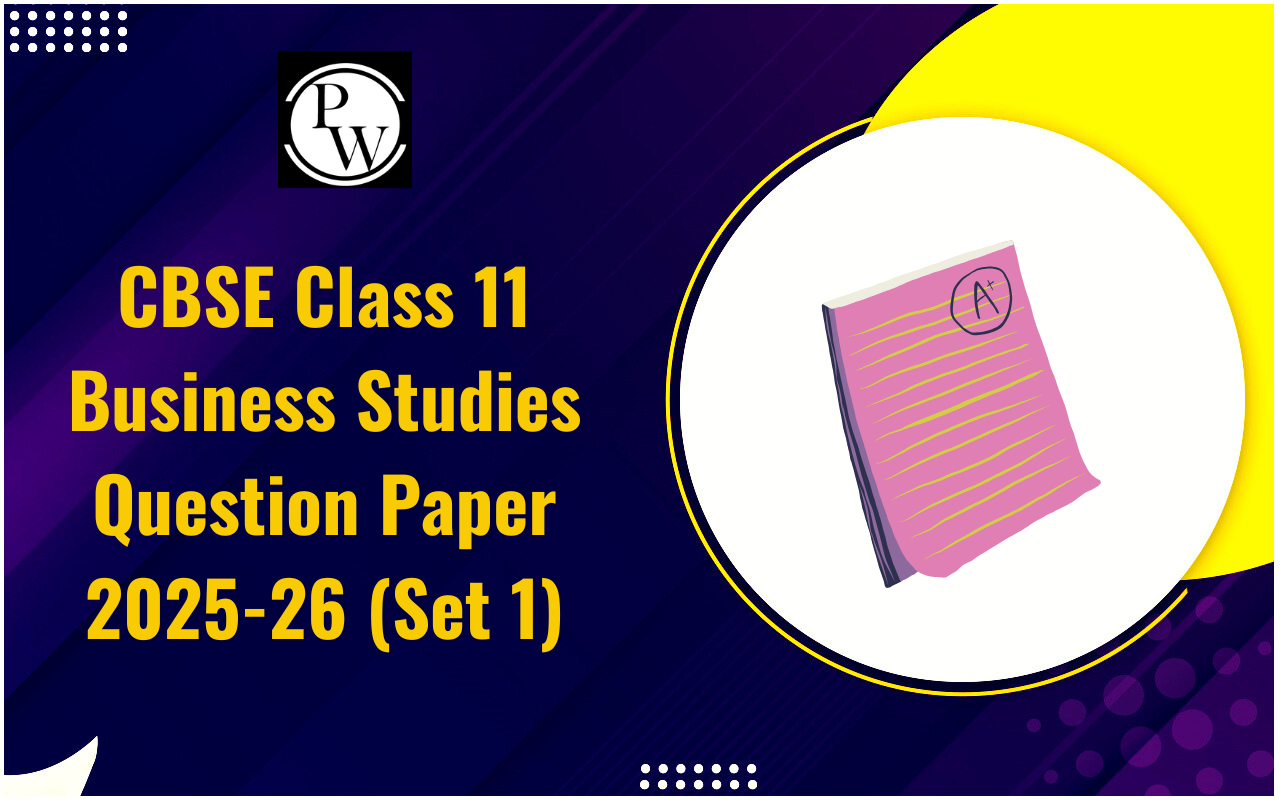

Inflation is a crucial economic concept that impacts everyone, from policymakers to everyday consumers. It represents the overall rise in the price levels of goods and services over a period, reducing the purchasing power of money. While moderate inflation can signal a growing economy, excessive inflation destabilizes economies and erodes savings. Let’s learn the meaning of inflation and delve into Causes of Inflation.
What is Inflation?
Inflation refers to the rate at which the general level of prices for goods and services rises over time in an economy. It means that a unit of currency buys fewer goods and services than before, indicating a decline in the purchasing power of money. It is usually measured using price indices such as the Consumer Price Index (CPI) or the Wholesale Price Index (WPI). While it is often viewed negatively due to its impact on affordability, a controlled level of it is vital for economic growth, as it encourages spending and investment. Economists generally aim for an optimal inflation rate that balances economic expansion without causing financial strain.Causes of Inflation
Inflation can arise from various factors, broadly categorized into demand-pull inflation, cost-push inflation, and built-in inflation, below mentioned are Causes of Inflation.Demand-Pull Inflation
First Causes of Inflation is Demand-pull inflation occurs when the demand for goods and services exceeds the economy’s production capacity. This imbalance pushes prices upward. It often arises during periods of economic expansion when: Increased Consumer Spending : Higher disposable incomes or access to credit can boost demand for goods and services. Government Spending : Large-scale government expenditures, such as infrastructure projects, can increase demand in specific sectors. Exports Growth : A surge in exports can create demand for domestic goods, leaving less supply for local consumers. In such cases, the rising demand "pulls" prices higher.Do you know: What is Demand Pull and Cost Push Inflation?
Cost-Push Inflation
Another Causes of Inflation is Cost-push inflation happens when production costs rise, forcing businesses to increase prices to maintain profitability. This form of inflation typically occurs due to: Increase in Raw Material Costs : A rise in the prices of key commodities, such as oil or metals, can increase production costs. Labor Costs : Wage hikes or labor shortages can push production costs higher, leading to increased prices. Supply Chain Disruptions : Events like natural disasters or global pandemics can disrupt supply chains, increasing the cost of goods. Unlike demand-pull inflation, cost-push inflation originates from the supply side, where rising costs "push" prices upward.Built-In Inflation
Built-in inflation results from the expectation of future inflation. When people anticipate higher prices, they adjust their behaviors accordingly. For example: Workers may demand higher wages to maintain their purchasing power, increasing production costs for businesses. Businesses may raise prices in anticipation of higher future costs, creating a self-reinforcing cycle of it. This Causes of Inflation is often sustained by a "wage-price spiral," where wages and prices continuously push each other higher.Monetary Policy and Inflation
The money supply in an economy also significantly influences Causes of Inflation. When central banks increase the money supply too rapidly, it can lead to it by: Increasing consumer purchasing power beyond what the economy can supply. Reducing the value of money in circulation, leading to higher prices. Monetary policy must strike a balance to ensure sufficient liquidity without triggering excessive inflation.External Factors
Global events and external shocks can also contribute to Causes of Inflation, such as: Currency Depreciation : A weaker domestic currency makes imports more expensive, contributing to it. Global Commodity Prices : Rising prices of essential commodities like crude oil or food on the global market can drive it in importing countries. Geopolitical Tensions : Wars, trade disputes, and political instability can disrupt global supply chains, increasing costs and prices.Effects of Inflation
Understanding the Causes of Inflation is essential because it affects various aspects of the economy and individual lives:Purchasing Power
Reduced purchasing power makes goods and services more expensive.Savings and Investments
High inflation can erode the value of savings, discouraging long-term investments.Income Inequality
It often disproportionately impacts low-income households, which spend a larger portion of their income on essentials.Economic Uncertainty
Persistent inflation can create uncertainty, affecting business planning and investment.Remedies for Inflation
Effective control of it requires coordinated efforts between monetary authorities, governments, and businesses. Below are some key remedies:Monetary Policy
Central banks play a crucial role in controlling it through monetary tools: Interest Rate Adjustments : Increasing interest rates reduces borrowing and slows consumer spending, curbing demand-pull inflation. Money Supply Regulation : Restricting excessive money supply helps prevent inflation caused by currency devaluation.Fiscal Policy
Governments can use fiscal measures to manage it: Reduced Public Spending : Cutting unnecessary expenditures lowers demand and helps control prices. Taxation : Increasing taxes can reduce disposable incomes, curbing excessive consumer spending. Subsidies for Essential Goods : Ensuring affordability of essential items like food and fuel during inflationary periods.Supply-Side Measures
Addressing cost-push inflation involves boosting the supply of goods and reducing production costs: Improved Infrastructure : Enhancing logistics and supply chains to minimize disruptions. Encouraging Domestic Production : Promoting local industries reduces dependency on costly imports. Technological Advancements : Adopting cost-effective technologies can lower production expenses.Wage and Price Controls
Price Ceilings : Governments may impose maximum price limits on essential goods to protect consumers. Wage Policies : Moderating wage hikes prevents the wage-price spiral.Encouraging Savings and Investments
Encouraging savings reduces excessive spending, while investments in productive sectors ensure long-term economic stability. Examples include: Promoting Savings Schemes : High-interest savings accounts can incentivize individuals to save. Investment Incentives : Tax benefits for investments in infrastructure and industry can enhance supply and reduce inflationary pressure.Import Policies
Diversification of Import Sources : Reducing reliance on a single source for essential imports can stabilize costs. Negotiating Favorable Trade Deals : Securing trade agreements for essential commodities can shield economies from global price shocks.Managing Public Expectations
Inflationary expectations play a significant role in sustaining inflation. Transparent communication about government and central bank policies can help manage public perceptions and stabilize the economy. It is a complex phenomenon with multiple Causes of Inflation, ranging from demand-supply imbalances to monetary and external factors. While moderate inflation can signal a healthy economy, uncontrolled inflation poses significant challenges. Understanding the underlying Causes of Inflation is critical for governments, businesses, and individuals to adapt and mitigate its adverse effects. By keeping it under control through prudent policies and strategies, economies can strive for sustainable growth and stability. Join PW Commerce Online Course now and excel in your academic and professional pursuits!Causes of Inflation FAQs
What is inflation, and how is it measured?
Inflation refers to the sustained rise in the general price level of goods and services in an economy over time, reducing the purchasing power of money. It is commonly measured using indices such as the Consumer Price Index (CPI) and the Wholesale Price Index (WPI), which track changes in the prices of a basket of goods and services.
What are the primary causes of inflation?
The primary causes of inflation include:
Demand-Pull Inflation: When demand for goods and services exceeds supply.
Cost-Push Inflation: When production costs rise, leading to higher prices.
Built-In Inflation: Driven by the expectation of future inflation.
Excess Money Supply: Caused by loose monetary policies.
External Factors: Such as rising global commodity prices and currency depreciation.
How does inflation impact individuals and the economy?
Inflation affects individuals by reducing the purchasing power of money, making goods and services more expensive. It can erode savings, widen income inequality, and create financial uncertainty. On a macroeconomic level, inflation impacts investment decisions, disrupts economic stability, and complicates policy-making for governments and central banks.
How can inflation be controlled?
Inflation can be controlled through:
Monetary Policy: Adjusting interest rates and regulating money supply.
Fiscal Policy: Reducing public spending, increasing taxes, or offering subsidies.
Supply-Side Measures: Improving infrastructure, promoting domestic production, and reducing import dependency.
Price and Wage Controls: Implementing ceilings on essential goods and moderating wage hikes.
Is inflation always harmful?
No, moderate inflation is not always harmful. It can be a sign of a growing economy, encouraging spending and investment. However, excessive inflation or hyperinflation can disrupt economic stability, while deflation (falling prices) can discourage production and investment. Striking a balance is essential for sustainable growth.
Talk to a counsellorHave doubts? Our support team will be happy to assist you!

Check out these Related Articles
Free Learning Resources
PW Books
Notes (Class 10-12)
PW Study Materials
Notes (Class 6-9)
Ncert Solutions
Govt Exams
Class 6th to 12th Online Courses
Govt Job Exams Courses
UPSC Coaching
Defence Exam Coaching
Gate Exam Coaching
Other Exams
Know about Physics Wallah
Physics Wallah is an Indian edtech platform that provides accessible & comprehensive learning experiences to students from Class 6th to postgraduate level. We also provide extensive NCERT solutions, sample paper, NEET, JEE Mains, BITSAT previous year papers & more such resources to students. Physics Wallah also caters to over 3.5 million registered students and over 78 lakh+ Youtube subscribers with 4.8 rating on its app.
We Stand Out because
We provide students with intensive courses with India’s qualified & experienced faculties & mentors. PW strives to make the learning experience comprehensive and accessible for students of all sections of society. We believe in empowering every single student who couldn't dream of a good career in engineering and medical field earlier.
Our Key Focus Areas
Physics Wallah's main focus is to make the learning experience as economical as possible for all students. With our affordable courses like Lakshya, Udaan and Arjuna and many others, we have been able to provide a platform for lakhs of aspirants. From providing Chemistry, Maths, Physics formula to giving e-books of eminent authors like RD Sharma, RS Aggarwal and Lakhmir Singh, PW focuses on every single student's need for preparation.
What Makes Us Different
Physics Wallah strives to develop a comprehensive pedagogical structure for students, where they get a state-of-the-art learning experience with study material and resources. Apart from catering students preparing for JEE Mains and NEET, PW also provides study material for each state board like Uttar Pradesh, Bihar, and others
Copyright © 2025 Physicswallah Limited All rights reserved.











